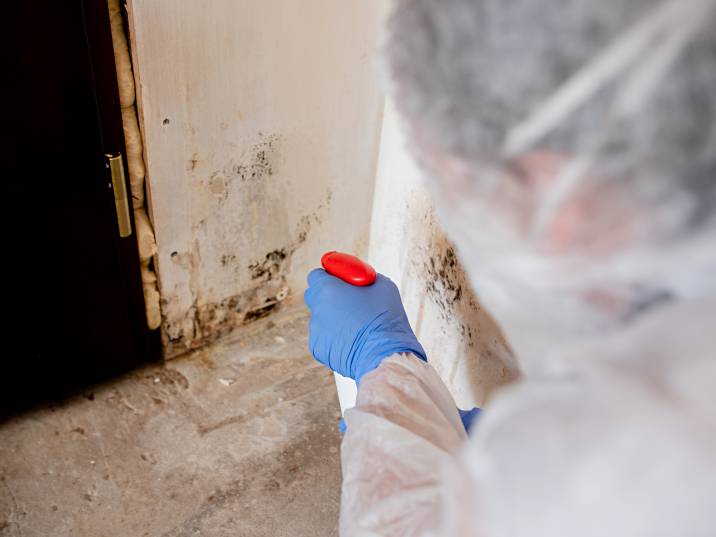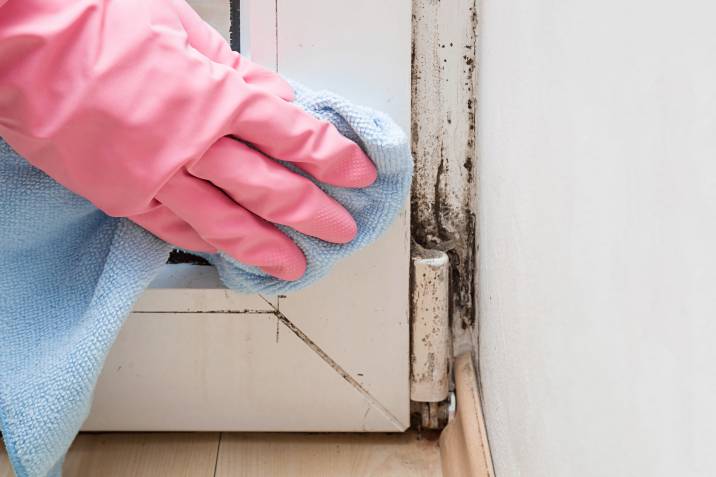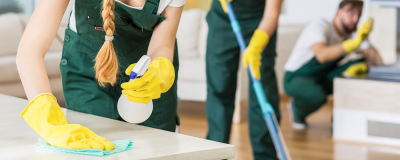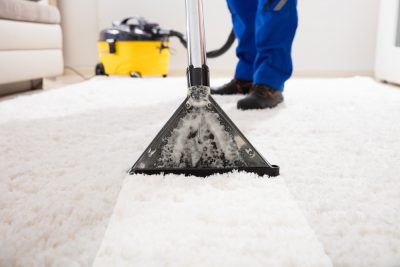- Oneflare /
- Cost Guides /
- Mould Removal

How Much Does Mould Removal Cost in Australia?
$250 - $6,000
What's on this page
- How Much Does Mould Removal Cost?
- Signs of Mould Buildup at Home
- Mould Removal Prices
- What Factors Affect Mould Inspection Costs?
- How to Reduce Mould Removal Costs
- Post a Job Request for Mould Removal
Read Related Mould Removal Articles
How Much Does Mould Removal Cost?
If you’ve spotted mould in your building, getting rid of it should be a top priority. Not only is mould unsightly – it can damage your home and affect your health. And because it can be difficult to remove, it’s a job that’s best left to pros. Mould removal typically costs anywhere from $200-3800, $45-90 per square metre, or $60-110 per hour.
But before you start comparing prices, you’ll want to make sure that it is mould that you’re dealing with.
Signs of Mould Buildup at Home
Up to 50 per cent of Australian homes can play host to mould, which is why it is key that homeowners stay on the lookout for these signs of mould buildup:
- A damp, musty smell near walls or coming from your A/C
- Clothing with spots that feel slimy or fluffy
- Strange-looking spots or patches on carpets or furniture
- Allergy flare-ups and persistent cough
- Warped, spotted walls
- Dirty tiles (especially in your bathroom)
- Condensation and past water damage
If you notice one or more of these happening at home, it might be time to look into mould inspection costs.
Mould Removal Prices
How much is mould removal in your area or for a specific space in your house? Check out the following tables for the average cost of mould remediation:
| City | Cost of Mould Removal |
| Sydney | $300-3,800 per project / $75-110 per hour |
| Melbourne | $300-3,700 / $75-110 per hour |
| Brisbane | $200-3,500 / $70-100 per hour |
| Canberra | $250-3,600 / $65-100 per hour |
| Perth | $300-3,800 / $75-110 per hour |
| Adelaide | $250-3,500 / $60-90 per hour |
| Home Area | Mould Remediation Cost |
| Inspection and testing | $100-350 |
| Whole house | $1,000-6,000 per house |
| Rooms (including kitchen and bathroom) | $500-4,000 per room |
| Basement | $450-3,250 |
| Attic | $1,000 |
| Drywall | $330-1,000 |
| Flooring | $500-1,200 / $20-40 per hour |
| Windows | $18-35 per hour |
| Crawl space (e.g. under the house) | $500-6,000 |
What Factors Affect Mould Inspection Costs?
Size of the mould-infested area
Smaller patches of furniture will cost less versus having to treat entire walls. This is because larger areas will naturally require more labour and longer use of special mould-removing equipment such as dehumidifiers and air scrubbers.
Mould type and treatment plan
The kind of mould you’re dealing with can impact mould remediation costs. Acremonium, for example, can be removed with a water and bleach solution. Alternaria is a type of mould that needs air testing and is best removed by a professional. Stachybotrys, also known as black mould, can be deadly and requires expert removal. The type of mould will also impact the treatment plan for your home.
Mould location
How much mould removal costs will also depend on where the fungi are located in your house. Mould removal in hard-to-reach areas such as crawl spaces or ceilings will cost a bit more since it will require a little more effort.
Inspection and air testing
In general, mould removal services will start the process with inspection and testing to determine what type of mould they’re dealing with. This may be costed out separately in their quote. For example, simple mould removal can start at $500, but inspecting and air testing can bump up the price to $1,000.
Damage costs
You might have to replace mould-damaged structures or materials once the removal is done. For example, replacing damaged drywall can cost upwards of $250.
How to Reduce Mould Removal Costs
Getting mould removed isn’t cheap or easy, but there are things you can do to reduce the cost.
- First, you can regularly inspect your home for mould to catch it before it spreads. Check your walls during the rainy season, check under the A/C and water closets, as well as near pipes.
- Next, fight mould and mildew with a water and bleach solution. Use a mask and gloves when handling bleach and other strong chemicals, and NEVER mix bleach with ammonia.
- Finally, you can use online resources to canvass for the most affordable mould removal service in your area.
Post a Job Request for Mould Removal
The next step to getting rid of the unsightly, unhealthy mould in your home is to book a reliable mould removal service. You can ask your friends and family for recommendations or get a quote in minutes through Oneflare. The platform lets you get a mould removal quote from service providers near you.
Whether you’re looking for mould removal costs in Melbourne, Sydney, or anywhere else, you’ll need to include the following details in your job request to get the most accurate quote:
- Your location
- A description of the mould issue in your home
- An estimate of the affected area/s’ measurements
- Any accessibility issues (e.g., a crawl space or ceiling)
- Your budget
- Your preferred appointment date
Hiring an experienced mould removalist can save you more than just time and effort. You’ll get rid of those nasty stains and smells, and you won’t have to worry about mould causing even more damage to your home and health. Plus, you might even learn more tips and tricks about how to prevent future mould damage! Post a job today and let Oneflare handle your mould removal needs.




